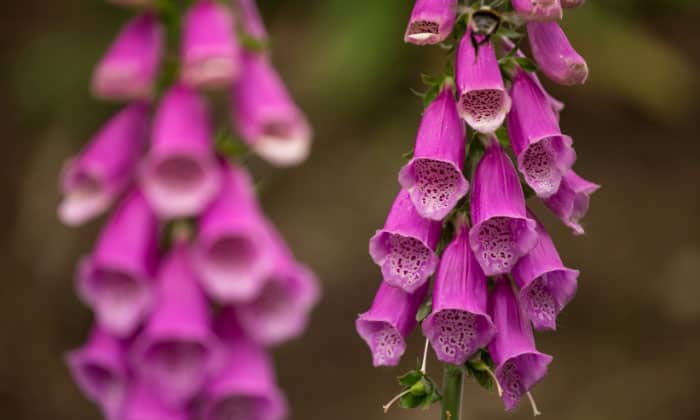Summer is a most-awaited season for many home gardeners because most are looking forward to having their gardens filled with different bright and beautiful flowers.
With foxgloves’ gigantic and colorful oval-shaped feature, surely, these types are a great way to make your front garden look more charming.
For optimal growth, you should plant foxglove seedlings in August and September in the fall or March through May in the spring. To learn more about when to plant foxglove seeds and how to grow them, keep on reading.
Table of Contents
Best Time to Plant Foxglove Seeds
1. Plant in August and September.
Late summer in August is the prime time to sow foxglove seeds. But you can also extend the time for growing them in September in fall. Such a planting schedule allows foxglove to have early root growth to tolerate the freezing winter and go dormant.
Another reason for planting foxglove seeds during these two months is because they prefer the cool weather. Anything above 90℉ will likely hinder growth or kill off the plants.
But although they can flourish in wintry conditions, protecting them during frigid times is essential, as foxglove seeds can only germinate when the temperature is within 50℉ to 59℉. One thing to keep them safe during the winter is to apply mulch to the plant.
2. Plant Foxgloves in March through May.
You can also grow foxglove from seed in spring as an alternative. For most zones, around March through May is the best time because these are the months when the last frost has already passed.
If you haven’t known yet, foxgloves grow best in USDA zones 4-10. And since each area has different last frost dates, it is essential to identify first when your freezing period will end so you can plant them once the weather starts to warm up.
Here’s a list of the average last frost for the different zones:
- Zone 4: April 24-May 12
- Zone 5: April 7-30
- Zone 6: April 1-21
- Zone 7: March 22-April 3
- Zone 8: March 13-28
- Zone 9: February 6-28
It is also essential to know the foxglove growing conditions to plant them successfully. This is because the temperatures may rise above the allowed threshold, 90 degrees Fahrenheit, once summertime comes.
The takeaway here is: if you live in an area where summer heat is extreme, plant them somewhere they can get a partial shade of the sun. What’s more, you’ll also need to irrigate fox gloves more than the standard amount, which is 1 inch of water per week.
How to Plant?
Follow these steps if you plan to grow foxgloves outdoors.
- Clean the planting site and dig a groove just on the surface of the soil.
- Water the soil to keep the seeds moist, which is essential for foxglove germination.
- Set the seeds in the groove, make sure there’s a 1-inch distance between each seed.
- Cover them with soil afterward.
- Irrigate the ground until the top 2 inches of the soil is moist.
- Watch out once they develop into seedlings, and remove some of them to allow more space as they grow.
If you prefer to sow foxglove seeds indoors, follow these steps.
- Prepare a seed starting tray or pot that has a height of 12 inches and drainage holes. Fill it with a starting mix and gently press the soil to eliminate all the air pockets inside.
- Irrigate the starting mix soil until there’s water dripping out of the drainage holes.
- Set numerous seeds in pots or trays above the mix. There’s no need to cover them; more light exposure will encourage foxglove sprouts.
- Let them sprout under growing lights and ensure that they are always hydrated.
- Just like when planting them outdoors, remove some of the seedlings as they grow to allow more space. There should always be at least 12 inches of space between each plant.
Types of Foxgloves
1. Apricot Beauty
This type of foxglove is best to plant if you prefer a pinkish flora that can grow up to 4 feet in height. Not only are they great for adding beauty to your garden, but they are good as a source of food for many pollinators.
2. Camelot Hybrid
Camelot Hybrid is a perfect choice to plant in your garden if you want to grow a variety of colors of this type.
Whether you prefer a white or purple bloom, this hybrid can produce both of them. Not only that, but they can also bear a broad bell-shaped flora.
3. Dalmatian Crème Hybrid
This variety is one of the most attractive foxgloves because of its extraordinary purple spots that you can see in the inner part of the bulb.
If you live in warmer zones, this hybrid is perfect to grow because it can flourish up to zone 9 and performs better in full sun.
4. Giant Yellow Herod
This variety is one of the most attractive ones that blooms bright yellow in summer. If you prefer a gigantic cultivar that can grow up to 6 feet, this type is ideal.
FAQS
How long does it take to grow foxglove from seed?
Foxgloves need at least 14 days to germinate and 6-8 weeks to become of perfect size. However, both biennial and perennial foxglove seeds take one year to flower.
Are foxgloves easy to grow from seed?
Yes. Foxgloves are easy to grow. As long as you keep the soil moist, your lovely bell-shaped flowers will thrive.
But one tip to make foxgloves grow best is to build support in their stem by staking them. This will also prevent them from falling over.
How late can I plant a foxglove?
You can plant a foxglove in October or even later, as long as the ground is still workable and not covered by frost.
That is because foxgloves grow well and are safe from crown rot when the soil is moist but not saturated with water or freeze-up. Contrariwise, be careful and avoid letting the ground dry off too much.
What do foxglove seeds look like?
Foxglove seeds are small and elongated, with only 1.0 mm in size. You can distinguish them by their brown color.
Conclusion
Learning when to plant foxglove seeds is crucial because we all live in different USDA zones with differing last frost dates.
Always remember that foxgloves prefer cooler conditions rather than warmer environments. So you can plant them from August to September if you don’t want to risk them at higher temperatures.
But if you missed fall planting, you can give your foxgloves a chance to flourish in spring as soon as the freezing period ends.
Therefore, watch out for the calendar before planting, and good luck growing amazing foxgloves.
Related:

Hi, I am William – Floridayards’ digital content creator. My job is to find answers to all your concerns with thorough research and our team’s expert advice. I will also bring you honest reviews on the best products and equipment for raising your beautiful garden. Please look forward to our work!

















